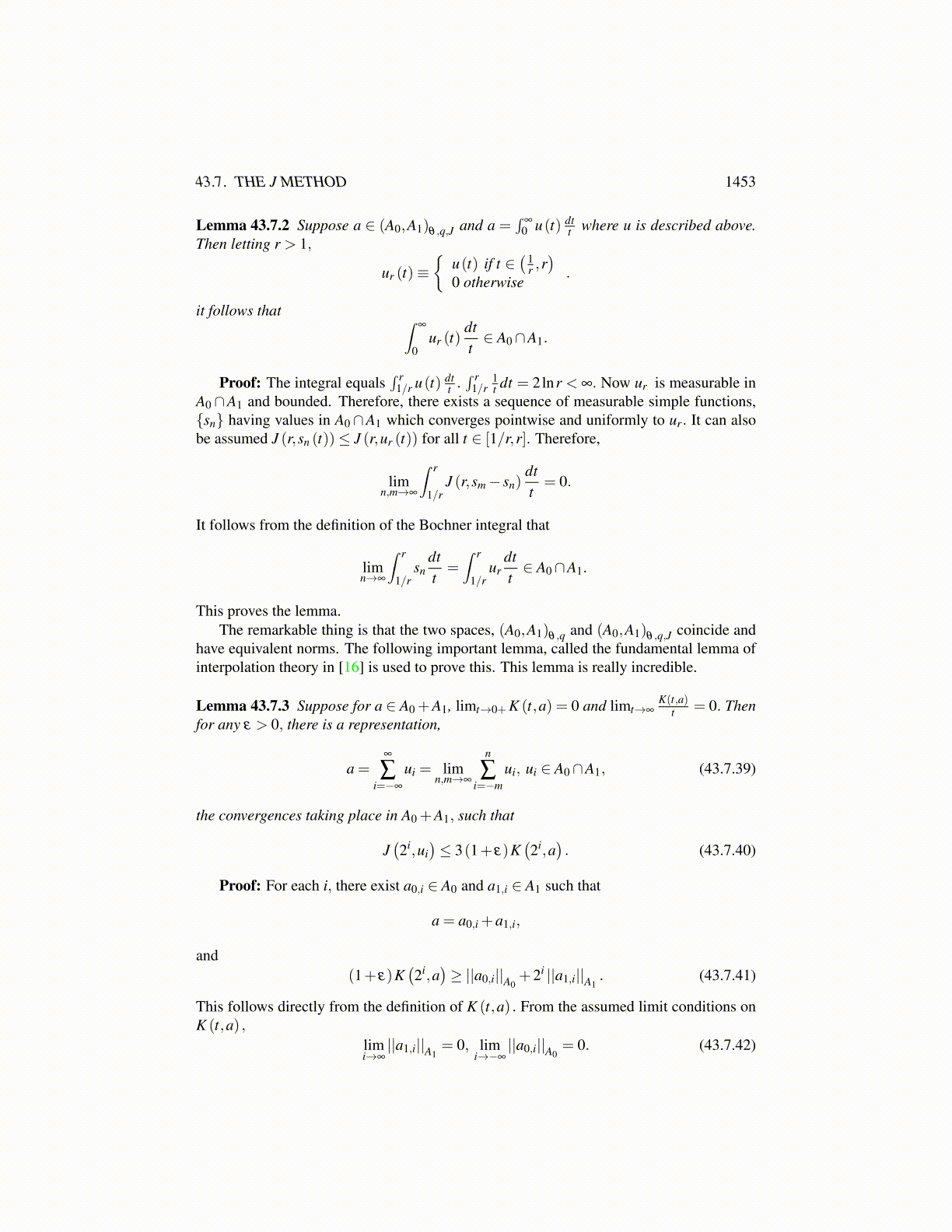
43.7. THE J METHOD 1453
Ta ∈ B0 +B1. Denote by K (t, ·) the norm described above for both A0 +A1 and B0 +B1since this will cause no confusion. Then
||Ta||θ ,q ≡
(∫∞
0
(t−θ K (t,Ta)
)q dtt
)1/q
. (43.6.34)
Now let a0 +a1 = a and so Ta0 +Ta1 = Ta
K (t,Ta) ≤ ||Ta0||0 + t ||Ta1||1 ≤M0 ||a0||0 +M1t ||a1||1
≤ M0
(||a0||0 + t
(M1
M0
)||a1||1
)and so, taking inf for all a0 +a1 = a, yields
K (t,Ta)≤M0K(
t(
M1
M0
),a)
It follows from 43.6.34 that
||Ta||θ ,q ≡
(∫∞
0
(t−θ K (t,Ta)
)q dtt
)1/q
≤(∫
∞
0
(t−θ M0K
(t(
M1
M0
),a))q dt
t
)1/q
= M0
(∫∞
0
(t−θ K
(t(
M1
M0
),a))q dt
t
)1/q
= M0
(∫∞
0
((M0
M1s)−θ
K (s,a)
)qdss
)1/q
= Mθ1 M(1−θ)
0
(∫∞
0
(s−θ K (s,a)
)q dss
)1/q
= Mθ1 M(1−θ)
0 ||a||θ ,q .
This shows T ∈L((A0,A1)θ ,q ,(B0,B1)θ ,q
)and if M is the norm of T,M ≤M1−θ
0 Mθ1 as
claimed. This proves the theorem.
43.7 The J MethodThere is another method known as the J method. Instead of
K (t,a)≡ inf{||a0||A0
+ t ||a1||A1: a0 +a1 = a
}for a ∈ A0 +A1, this method considers a ∈ A0∩A1 and J (t,a) defined below gives a normon A0∩A1.
Definition 43.7.1 For A0 and A1 Banach spaces as described above, and a ∈ A0∩A1,
J (t,a)≡max(||a||A0
, t ||a||A1
). (43.7.35)